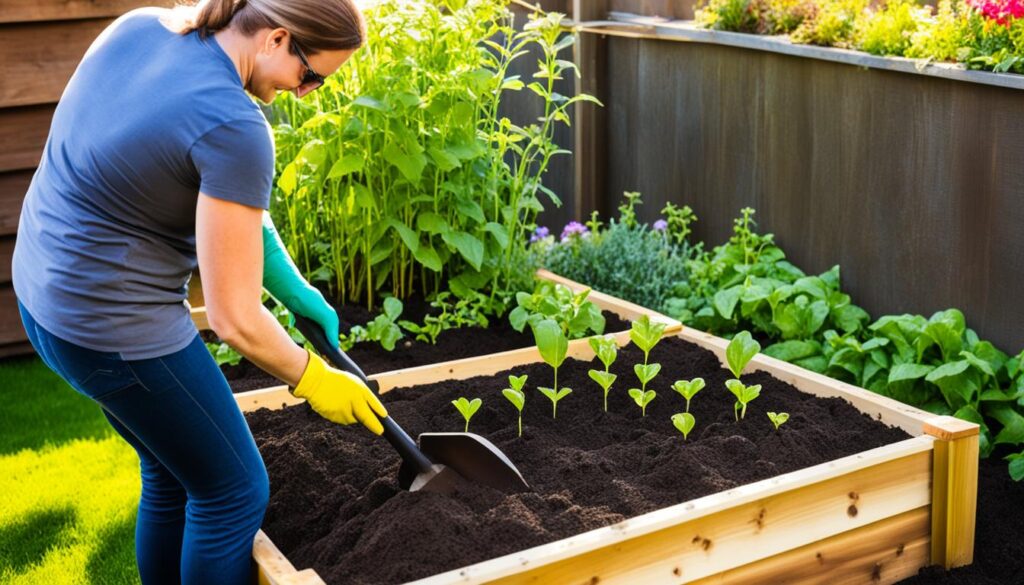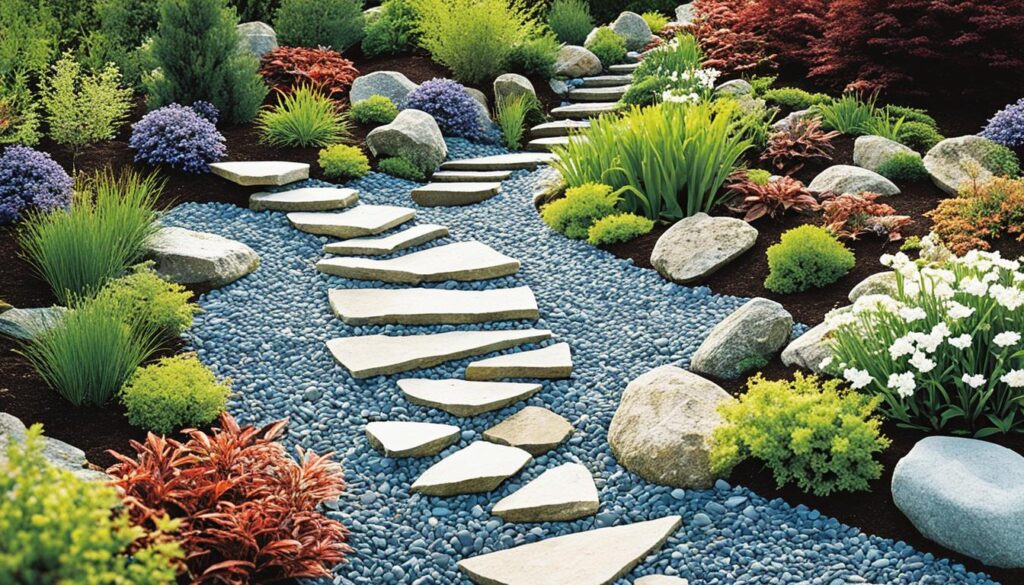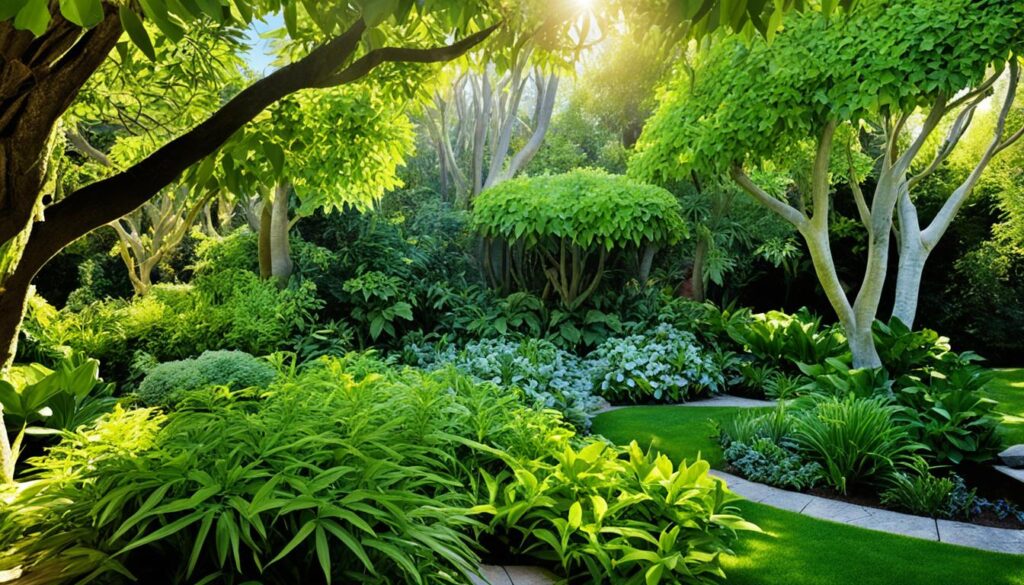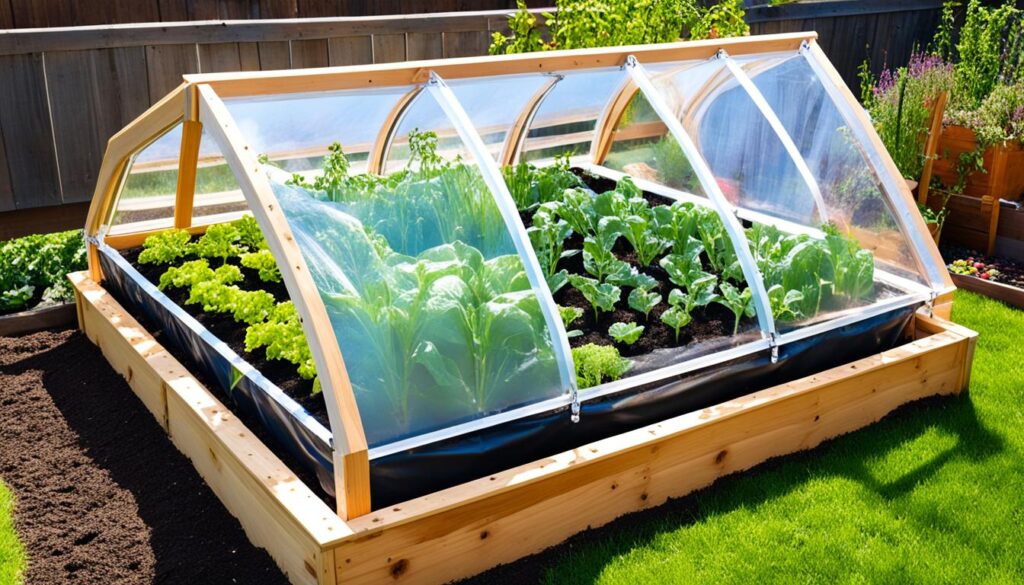Gardening can be a rewarding hobby, but it often requires regular care and attention, especially when it comes to watering. Fortunately, self watering pots have revolutionized indoor plant care, making it easier than ever to keep your plants healthy and thriving. In this guide, I will walk you through the process of using self watering pots and offer valuable tips to ensure your plants receive the right amount of water without any hassle.
Key Takeaways:
- Self watering pots are ideal for busy individuals who want to maintain healthy indoor plants with minimal effort.
- Understanding how self watering pots work is crucial for successful plant care.
- Choose the right self watering pot based on your plant’s needs, size, and pot material.
- Proper setup and maintenance of self watering pots is essential for optimal performance.
- Regularly monitor and refill the reservoir to ensure your plants receive adequate moisture.
- Self watering pots offer advantages such as consistent watering, prevention of over or under-watering, and reduced manual watering frequency.
- Select plants that thrive in self watering pots and avoid those that prefer dry conditions or excessive moisture.
- Remember to consider other aspects of plant care, such as lighting, nutrition, and pest control.
Understanding Self Watering Pots
Before using self watering pots, it’s important to understand how they work. These pots have a built-in reservoir that stores water, allowing the plants to draw up moisture as needed. This creates a self-regulating system that prevents over or under-watering. You can think of it as an automatic watering system for your plants.
Self watering pots are a game-changer for indoor plant care. With their built-in reservoirs, they provide a constant supply of water for your plants, ensuring they receive the right amount of moisture without you having to worry about it. This is especially beneficial for those who are new to gardening or have busy schedules.
Indoor plant care tips for self watering pots include proper understanding and utilization of their automatic watering systems. These pots are designed to create a self-regulated environment for your plants, avoiding any risks of over or under-watering. The built-in reservoir stores water, allowing the plants to draw the moisture they need, resulting in healthier and happier plants.
Using self watering pots is not only convenient but also ensures the optimal health of your indoor plants. The automatic watering system takes the guesswork out of plant care, providing a consistent water supply based on your plants’ needs. This helps in maintaining the ideal moisture level for your plants, promoting their growth and overall well-being.
With self watering pots, you can easily manage your indoor plant care routine and maintain thriving greenery effortlessly. The automatic watering system eliminates the need for constant monitoring and watering, giving you peace of mind and allowing you to enjoy the beauty of your plants without the stress of plant care.
Choosing the Right Self Watering Pot
When selecting a self watering pot, it’s important to keep in mind that not all pots are created equal. To ensure the best plant watering solutions for your self watering container gardening, there are a few factors you should consider.
Size and Design
Firstly, consider the size of your plant. Some self watering pots are designed specifically for small herbs or plants, while others can accommodate larger plants. Make sure to choose a pot that provides enough room for your plant’s roots to grow.
In addition to size, pay attention to the pot’s material and design. Opt for sturdy materials like ceramic or plastic that will hold up well over time. The design should also be visually appealing and complement your indoor space.
Indicator and Drainage System
A key feature to look for in self watering pots is an indicator that shows when the reservoir needs refilling. This visual cue makes it easy to keep track of your plant’s water supply, ensuring that it never goes dry.
Another important consideration is whether the pot has a drainage system. A built-in drainage system prevents waterlogging, which can be detrimental to your plants’ health. It allows excess water to escape, preventing root rot and other moisture-related issues.
To help you make an informed decision, here’s an example of a self watering pot that incorporates these key features:
With these factors in mind, you can choose the right self watering pot that not only provides the convenience of automatic watering, but also supports the health and vitality of your plants.
Proper Setup of Your Self Watering Pot
Once you’ve chosen the perfect self watering pot for your plants, it’s time to set it up for success. A proper setup ensures that your self watering pot functions effectively, providing your plants with the right amount of water when they need it most.
To begin, add a layer of small rocks or gravel at the bottom of the pot. This layer will aid in drainage, preventing water from pooling around the roots and causing root rot. It’s an essential step in creating a healthy environment for your plants.
Next, add a layer of potting soil, leaving sufficient space for your plant’s roots to grow and spread comfortably. Be generous with the soil, ensuring that it fills the pot adequately.
Now, it’s time to insert the wick or watering tube that comes with your self watering pot. Carefully place the wick or tube into the potting soil, making sure it reaches the bottom of the reservoir. This ensures that water can be drawn up into the soil as needed, providing your plants with a constant supply of moisture.
Remember, each self watering pot may have a slightly different setup process, so it’s essential to consult the manufacturer’s instructions for specific guidance. They will provide you with the necessary information to ensure proper setup and maximum plant care.
Watering and Refilling the Reservoir
To provide adequate moisture control for plants in a self watering pot, simply fill the reservoir with water up to the indicated level. This ingenious system gradually releases water into the soil, keeping it consistently moist. It’s important to monitor the water level in the reservoir and refill it as necessary to ensure your plants stay properly hydrated.
When refilling the reservoir, remember to use room temperature water to avoid shocking the plant’s roots. This will help maintain a conducive environment for optimal growth. Additionally, it’s crucial to avoid overfilling the reservoir, as this can lead to waterlogging and damage the root system.

By following these simple watering hacks and being mindful of moisture control for your plants, you can ensure they thrive in their self watering pots. The innovative design of these pots takes the guesswork out of watering and provides a convenient solution for busy plant enthusiasts.
Maintenance Tips for Self Watering Pots
While self watering pots make plant care easier, they still require regular maintenance. To ensure optimal performance of your self watering pots and keep your indoor plants happy, I recommend following these maintenance tips:
1. Check Soil Moisture Regularly
Keep an eye on the soil moisture levels to ensure that the reservoir is providing enough water for your plants. Use your finger to feel the top inch of soil, and if it feels dry, it’s time to refill the reservoir. Remember, different plants have different watering needs, so adjust accordingly to avoid over or under-watering.
2. Clean the Pot and Tubes
To prevent clogs or the growth of algae, it’s important to clean your self watering pot and tubes periodically. Remove any debris or sediment that may accumulate in the reservoir or tube. Use a gentle brush or cloth to scrub away any residue. This will ensure a clear path for water to flow and prevent any blockages.
3. Follow Manufacturer’s Instructions
Each self watering pot may have specific maintenance guidelines, so it’s essential to read and follow the manufacturer’s instructions. They will provide valuable insights into how to properly care for your self watering pot and maximize its efficiency. If in doubt, reach out to the manufacturer for further guidance.
By incorporating these maintenance tips into your plant care routine, you’ll ensure that your self watering pots continue to provide automatic watering systems for your indoor plants, keeping them healthy and thriving.
Troubleshooting Common Issues
Sometimes, issues may arise when using self watering pots. If your plant shows signs of underwatering, check if the wick or watering tube is properly inserted into the soil. It’s important to ensure that the water delivery system is functioning correctly to provide adequate moisture to the plant’s roots.
If, on the other hand, your plant is overwatered, you may need to reduce the amount of water in the reservoir. Overwatering can lead to root rot and other plant health issues. Additionally, proper drainage is crucial to prevent waterlogged soil and promote healthy root development.
If you encounter any difficulties in troubleshooting or determining the cause of the problem, it’s recommended to seek advice from a knowledgeable plant expert or consult the manufacturer of the self watering pot. They can provide guidance specific to your situation and help resolve any difficulties you may be facing.
Remember, regular observation and care are essential in maintaining the health of your plants and ensuring the optimal performance of your self watering pot.

Now that we’ve covered troubleshooting common issues, let’s explore the advantages of using self watering pots and the key considerations when selecting plants for these innovative containers.
Advantages of Self Watering Pots
Self watering pots offer several advantages for indoor gardening enthusiasts like myself. They provide a reliable and consistent water supply, ensuring that my plants are never thirsty. With their built-in reservoirs, these innovative containers prevent both overwatering and underwatering, eliminating the guesswork and saving me from the hassle of manual watering. This is particularly beneficial for busy individuals or those, like me, who occasionally forget to water their plants regularly.
Using self watering pots also reduces the frequency of manual watering, giving me more time to enjoy my plants and allowing me to confidently leave them for longer periods without worrying about them drying out or drowning. The self-regulating system of these pots ensures that my plants receive just the right amount of water they need, promoting healthy growth and development.
By using self watering pots, I have found a practical and efficient solution for indoor plant care. Not only do these pots minimize the risk of over or under-watering, but they also help to maintain the moisture levels necessary for optimal plant health. With the convenience they offer, self watering pots simplify the process of indoor gardening and make it accessible to plant enthusiasts of all skill levels.
Choosing Plants for Self Watering Pots
When it comes to self watering pots, not all plants are created equal. It’s important to choose plants that thrive in moderate moisture levels and do not require excessive watering. Thankfully, there are plenty of options to choose from that will flourish in self watering planters.
Herbs are an excellent choice for self watering pots. They not only add beauty to your indoor garden but also provide fresh flavors for your culinary creations. Basil, thyme, and parsley are just a few examples of herbs that will thrive in self watering containers.
Succulents are another great option for self watering planters. These resilient plants store water in their leaves and stems, making them well-suited for environments with limited moisture. Aloe vera, echeveria, and jade plants are popular choices for succulent lovers.
If you prefer a touch of the tropics, many tropical plants also thrive in self watering pots. Peace lilies, snake plants, and pothos are just a few examples of tropical plants that will appreciate the consistent moisture provided by self watering containers.
On the other hand, it’s important to avoid plants that prefer dry conditions or are prone to rot in overly moist environments. Cacti and other desert plants, for example, are not suitable for self watering pots as they require infrequent watering and well-draining soil.
Remember, choosing the right plants for your self watering pots is key to their success. Consider the plant’s moisture requirements and adaptability to consistently moist soil. By making the right choices, you can create a beautiful and thriving indoor garden with the help of self watering planters.

Additional Tips for Successful Plant Care
While using self watering pots is a great way to ensure your plants receive consistent moisture, it’s important to remember that plant care goes beyond watering. Here are some additional tips to help your indoor plants thrive:
- Provide Adequate Light: Make sure your plants are placed in an area where they can receive sufficient light. Different plants have different light requirements, so do some research on the specific needs of your plants.
- Supply the Right Nutrients: Fertilize your plants regularly to provide them with the necessary nutrients for healthy growth. Choose a fertilizer that suits the needs of your plants and follow the instructions for application.
- Monitor for Pests and Diseases: Keep an eye out for any signs of pests or diseases on your plants. Inspect the leaves regularly and take action promptly if you spot any issues. There are organic pest control options available if you prefer to avoid harsh chemicals.
- Regular Pruning: Prune your plants as needed to remove dead or damaged foliage and promote new growth. This will help maintain the overall health and shape of your plants.
- Repotting: Over time, your plants may outgrow their pots or their potting soil may become depleted of nutrients. When necessary, repot your plants into larger containers with fresh potting soil to give them room to grow.
By following these additional plant care tips along with using self watering pots, you’ll create an optimal environment for your indoor plants to thrive.
Conclusion
Self watering pots are a fantastic invention for indoor gardening enthusiasts. They offer convenience and peace of mind, ensuring your plants receive the proper moisture they need without the hassle of regular watering. By following the proper setup, maintenance, and plant selection tips for self watering pots, you can create a thriving indoor garden with minimal effort.
Understanding how to use self watering pots is key to their effectiveness. By simply filling the reservoir to the indicated level, the pot will gradually release water, keeping the soil consistently moist. This eliminates the risk of over or under-watering, providing a self-regulating system for your plants.
Additionally, self watering pots make indoor plant care easier and more enjoyable. With less frequent manual watering, you can spend more time enjoying the beauty of your plants rather than worrying about their hydration needs. So whether you’re a busy individual or a plant lover who wants to ensure their plants thrive, self watering pots are a must-have addition to your indoor garden. Happy gardening!








